Low-Code Development Platform Market Size & Share Analysis - Trends, Drivers, Competitive Landscape, and Forecasts (2024 - 2030)
Get a Comprehensive Overview of the Low-Code Development Platform Market Report Prepared by P&S Intelligence, Segmented by Offering (Solution, Service), Deployment Type (Cloud, On-Premises), Enterprise Size (Large Enterprises, SMEs), Vertical (IT, BFSI, Retail, Healthcare, Government, Manufacturing, Media and Entertainment, Education, Energy and Utilities), and Geographic Regions. This Report Provides Insights From 2017 to 2030.
Low-Code Development Platform Market Size
Market Statistics
| Study Period | 2017 - 2030 |
| 2023 Market Size | USD 24.8 Billion |
| 2024 Market Size | USD 32.4 Billion |
| 2030 Forecast | USD 167.0 Billion |
| Growth Rate (CAGR) | 31.4% |
| Largest Market | North America |
| Fastest Growing Market | Asia-Pacific |
| Nature of the Market | Fragmented |
Market Size Comparison
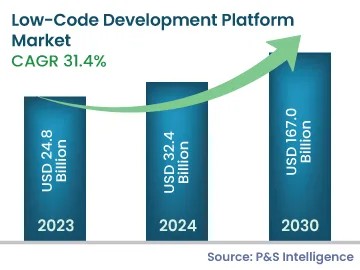
Key Players
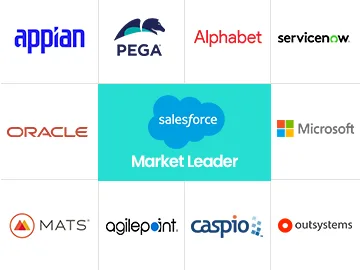
Key Report Highlights
|
Explore the market potential with our data-driven report
Low-Code Development Platform Market Analysis
The global low-code development platform market generated revenue of USD 24.8 billion in 2023, which is expected to witness a CAGR of 31.4% during 2024–2030, to reach USD 167.0 billion by 2030.
The market is majorly propelled by the rising rate of digitalization and the need to build applications quickly. Other factors contributing to this regard are the cost-effectiveness, time-saving, and higher productivity offered by these platforms.
Low-code development platforms also benefit artificial intelligence development, by cutting the costs of development and allowing the AI software to be created in less time, from pre-defined components.
This platform is based on visual programming and a graphical user interface, to allow programmers to design applications more quickly compared to hard-coded programming methods. It focuses on the innovation of new applications and accelerates digital transformation.
Low-Code Development Platform Market Trends & Growth Drivers
Need for Optimum TTM Strategy Is a Key Trend
- In the current economic condition and increasing competition in the market, companies are constantly working on achieving more efficiency with limited resources. This creates a major need for an effective TTM strategy to keep users engaged with new applications and features.
- Digital transformation across the BFSI, healthcare, education, retail, and other verticals has enhanced the functioning of respective organizations.
- Companies offer digital applications to retain their users, provide high satisfaction to customers, and maintain data in an organized manner.
- Low-code development platform offers faster development of applications, availability of drag-and-drop templates, and ease in developing web and mobile applications, which enhance the scalability of the developed applications.
- As a result, enterprises are able to develop new applications in less-time period to compete and sustain in the market.
- Moreover, traditional software development cannot match with enhanced functions, speed, and productivity gains, which are offered by the low-code development platform.
- In addition, the surge in remote development during the COVID-19 pandemic is boosting the adoption of low-code development platforms, despite ongoing cost optimization efforts.
- While low-code application development is not new, a confluence of digital disruptions, hyper-automation, and the rise of composable business has led to an influx of tools and rising demand.
- Low-code as a general social and technological movement is expected to continue growing significantly. For example, low-code application platforms (LCAP) are expected to remain the largest component of the low-code development technology market through 2022, increasing nearly 30% from 2020 to reach $5.8 billion in 2021. Thus, companies are leveraging the platform to optimally strategize TTM for new product/service launches.
Increasing Demand for Business Digitization Is a Key Driver
- With digital transformation, companies operating in the BFSI, manufacturing, automotive, oil & gas, and several other verticals are rapidly adopting digital technologies in order to stay ahead.
- According to the World Economic Forum, industries, led by BFSI, manufacturing, and retail, are expected to contribute approximately $100 trillion in additional value to the world economy by 2025.
- Low-code development platforms play a critical role in the digital transformation of an organization, helping reduce the time and resources consumed by the traditional software development process.
- With the increase in the demand for business applications across industries, the platform is playing a pivotal role in enabling the quick digitization of business processes, such as sales, accounting & finance, and operations.
- Digital transformation has become centered on computer and mobile applications that are useful for users. This inclination is directly fueling the growth of the mobile application market, which is further increasing the demand for low-code development platforms.
Threat to Scalability and Security of Data
- The low-code development platform is becoming a useful tool for citizen developers, through which they can build, test, and deploy enterprise-grade applications.
- However, the security and scalability of data remain a major concern for organizations.
- The visibility of the data is a challenge for the organizations, as it becomes difficult to monitor what their employees are developing, which may lead to the problem of shadow IT, an IT project that is not supported by the organization’s IT department.
- Further, developers have to define permission and access control decisions, which make the data, such as know your customer (KYC), vulnerable. Such sensitive data needs effective management, where proper implementation of access and control decisions is required.
- Low-code development platform usually offers access control, where one can control the viewing, editing, and sharing of data.
- However, more advanced controls, such as monitoring logins and sharing, auto-expiring time-based access, and similar in-depth access control, are difficult to define while using this platform.
- Also, some low-code platforms support interoperability, where developers can build applications that connect to multiple data sources.
- In such cases, data sources with poor security can harm other data. This poses a threat to the scalability and security of the data in applications developed by using the low-code development platform.
- Therefore, as a threat to the security and scalability of data, enterprises are still skeptical regarding the adoption of this platform.
Low-Code Development Platform Market Industry Outlook
Offering Insights
- In 2023, based on offering, the solution category held a larger share, over 70%, due to the surging adoption of these platforms in different verticals to reduce the long-term expenses on operations.
- This is done by reducing and, in some cases, completely eliminating the need to hire skilled developers. Through these solutions, the digital transformation of organizations became easy and cost-effective.
- Various features, such as pre-built templates and drop-and-drag options, provide the ability to build apps instantly.
- Whereas, the services category is projected to grow at a higher CAGR, of 31.6%, during 2024–2030. This is due to the increasing demand for integration and implementation services.
During the study, we have analyzed two types of offerings in the report:
- Solution (Larger Category)
- Service (Faster-Growing Category)
Deployment Type Analysis
- The cloud category is projected to grow at a higher CAGR, of 31.5%, during 2024–2030, as well it holds the largest market share.
- Cloud is how most low-code development platforms are deployed, as it offers real-time access to observe and monitor apps and services.
- Cloud-based deployment provides various other advantages, such as high speed, 24/7 service, administrative capabilities, and higher scalability. Enterprises are mostly using the cloud to ease monitoring and management.
- Some of the popular cloud-based low-code development platforms are App Maker on Google Cloud and Mendix on IBM Cloud.
Below are the major deployment types covered in the report:
- Cloud (Larger and Fastest-Growing Category)
- On-Premises
Enterprise Size Insights
- Based on enterprise size, the large enterprise category accounted for a larger share, of around 65%, in 2023. This is because large enterprises have significantly higher budgets to adopt low-code development platforms to develop a large number of new applications for their operations within less time.
- For instance, companies such as Genpact Limited and Yahoo Inc. have already adopted low-code development platforms to increase their work efficiency.
- Whereas, the SMEs category is projected to register faster growth, advancing at a CAGR of 31.7%, during the forecast period.
- This can be attributed to the inclination of SMEs toward cloud-based low-code development platforms to minimize resources and cost barriers for application development.
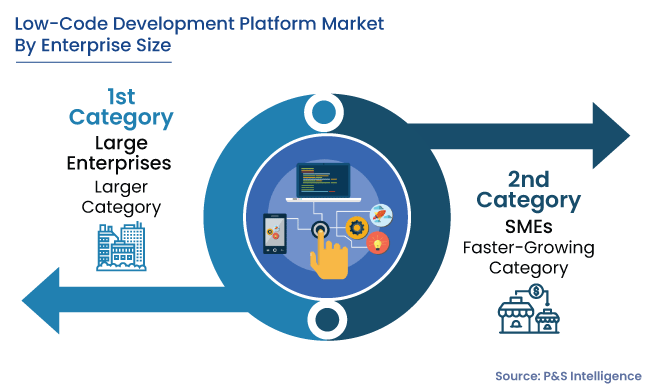
The following enterprises are included in the report:
- Large Enterprises (Larger Category)
- SMEs (Faster Category)
Vertical Analysis
- The IT category held the largest share, of around 30%, in 2023, due to the rapid adoption of new technologies.
- Software companies develop a large number of web, desktop, and mobile apps and third-party solutions. Thus, to enhance productivity and ensure the optimal utilization of resources, these companies are adopting low-code development platforms to scale up their application development capacity.
- On the other hand, the BFSI sector is expected to register the fastest growth over the forecast period. This can be attributed to the process simplicity and the growing requirement to digitize various processes, including back-office operations, origination, self-service, and client onboarding.
- Hence, Citi Bank, Bank of America, and BNY Mellon invested $20 million in a low-code platform, named Genesis, in July 2022.
Below are the major verticals covered in the report:
- IT (Larger Category)
- BFSI (Faster Category)
- Retail
- Healthcare
- Government
- Manufacturing
- Media and Entertainment
- Education
- Energy and Utilities
- Others
North America Is the Largest Market
- North America held the largest market share, of 45%, in 2023. This is attributed to the fast adoption of digital technologies and the existence of various key players in the region.
- Furthermore, the increasing focus on strengthening the IT infrastructure is driving the requirement for mobile and computer apps and other kinds of software.
- Moreover, the high disposable income and rising smartphone penetration in the region are propelling the market growth.
- With the increasing smartphone penetration, people in the continent are heavily adopting mobile applications for various purposes, such as online purchasing, social media interactions, banking, messaging, and online gaming.
- This digital inclination is directly fueling the growth of the mobile application market, which is further increasing the demand for low-code platforms.
- Thus, in March 2022, Appian introduced the latest version of its low-code platform, which enables customers to design, discover, and automate various business processes.
- On the other hand, APAC is the fastest-growing market, advancing at a CAGR of 31.8% during 2024–2030. This is because of the increasing internet usage and the need of firms for lower operating costs.
- In addition, the rising disposable income in emerging economies is considerably propelling the sale of mobile devices, which, in turn, fuels the growth of the industry in the region.
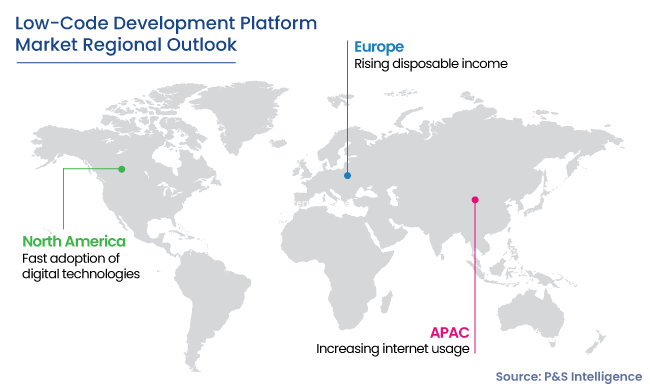
Further, regions and countries analyzed for this report include:
- North America (Largest Regional Market)
- U.S. (Larger and Faster-Growing Country Market)
- Canada
- Europe
- Germany (Largest Country Market)
- U.K. (Fastest-Growing Country Market)
- France
- Italy
- Spain
- Rest of Europe
- Asia-Pacific (APAC) (Fastest-Growing Regional Market)
- China (Largest Country Market)
- Japan
- India (Fastest-Growing Country Market)
- South Korea
- Australia
- Rest of APAC
- Latin America (LATAM)
- Brazil (Largest and Fastest-Growing Country Market)
- Mexico
- Rest of LATAM
- Middle East and Africa (MEA)
- Saudi Arabia (Largest Country Market)
- South Africa
- U.A.E. (Fastest-Growing Country Market)
- Rest of MEA
Low-Code Development Platform Market Share
The low-code development platform market is highly fragmented with the presence of several key players. Rapid development in digital technologies, such as AI, machine learning, and predictive analytics, and digital transformation of industries have increased competition in the market.
Citing the high growth potential of the market, companies are taking several strategic developments, such as mergers and acquisitions, collaborations, and product launches, to gain a competitive advantage. For instance, Google LLC acquired AppSheet (SolveBot Inc.), a provider of low-code development platforms for application software for an undisclosed amount. With this acquisition, the former aimed to enhance its low-code offerings.
Low-Code Development Platform Companies:
- Salesforce.com Inc.
- Appian Corporation
- Pegasystems Inc.
- Alphabet Inc.
- Oracle Corporation
- ServiceNow Inc.
- Microsoft Corporation
- MatsSoft Limited
- AgilePoint Inc.
- Outsystems Inc.
- Caspio Inc.
Low-Code Development Platform Industry News
- In June 2023, Sandhata partnered with Pegasystems Inc. to deliver advanced low-code workflow automation solutions to its clients.
- In September 2021, Akkio secured a $3 million investment from Bain Capital Ventures to enhance its automated decision-making capabilities using artificial intelligence and machine learning.
- In May 2021, Appian Corporation released the Appian low-code automation platform, which provides a revolutionary code-free method for integrating business data.
- In January 2020, Celonis and Appian Corporation announced their technical collaboration and integration initiatives to combine Appian's low-code automation platform with Celonis Intelligent Business Cloud's strong process mining technology.
Frequently Asked Questions About This Report
The low-code development platform industry will reach a value of USD 167.0 billion in 2030.
The market for low-code development platform will reach a value of USD 32.4 billion in 2024.
The industry for low-code development platform is very fragmented in nature, with the existence of some major players.
North America is leading the industry for low-code development platform, with a share of 45% in 2023.
Cloud is the leading deployment type in the low-code development platform industry, and it will also propel at a higher rate, of 31.5%, during 2024–2030.
The growing demand for optimum TTM strategy is the latest trend in the low-code development platform market.
Request the Free Sample Pages
Want a report tailored exactly to your business need?
Request CustomizationWe are Trusted by

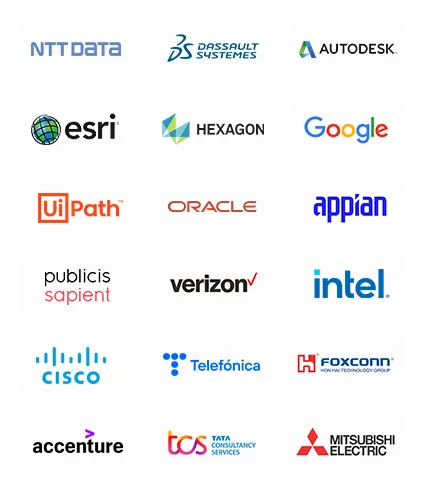
Working with P&S Intelligence and their team was an absolute pleasure – their awareness of timelines and commitment to value greatly contributed to our project's success. Eagerly anticipating future collaborations.
McKinsey & Company
IndiaOur insights into the minutest levels of the markets, including the latest trends and competitive landscape, give you all the answers you need to take your business to new heights
We take a cautious approach to protecting your personal and confidential information. Trust is the strongest bond that connects us and our clients, and trust we build by complying with all international and domestic data protection and privacy laws